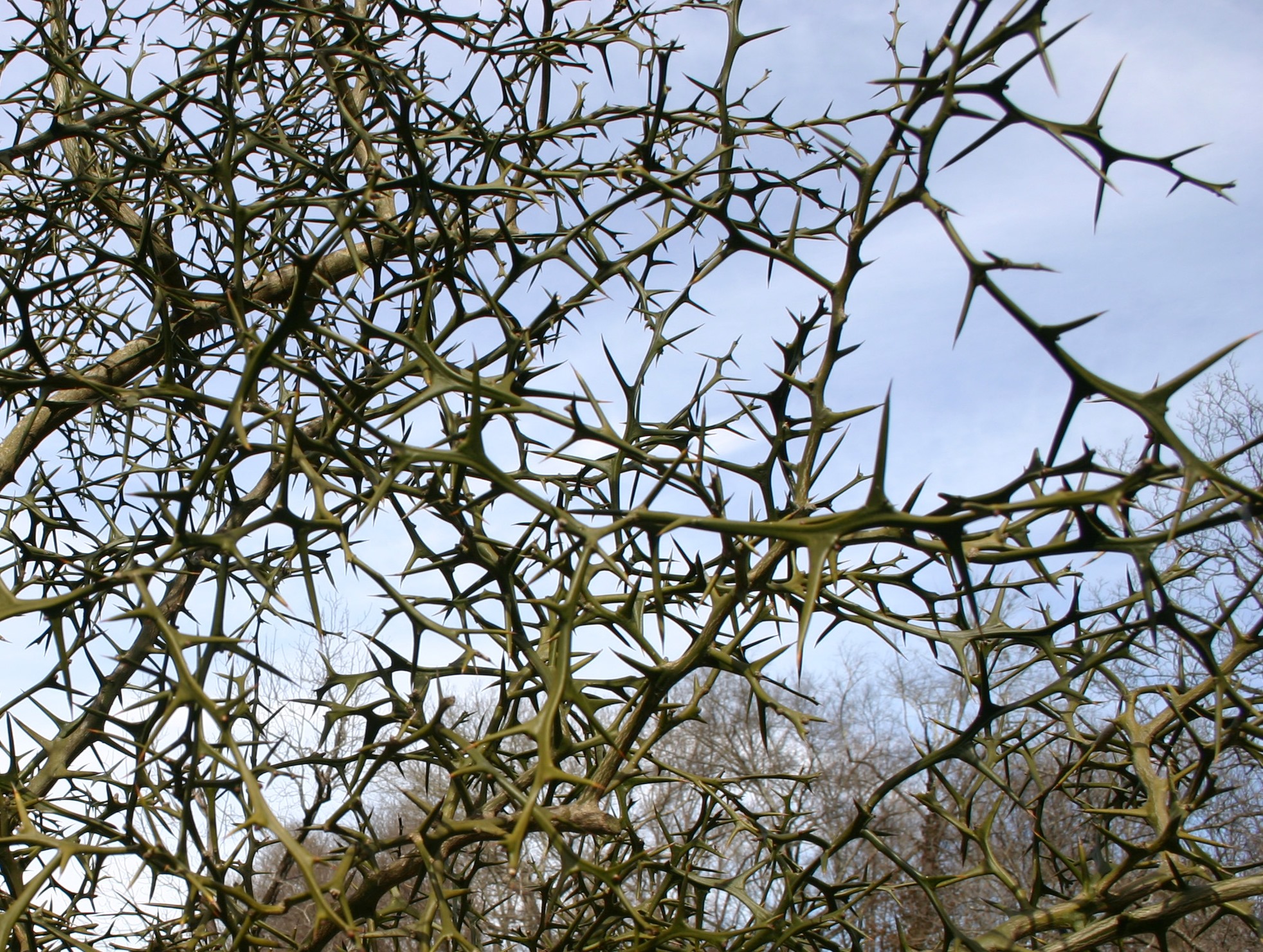Every gardener has their favorites. I love anything with thorns. My friend Sallie labeled this peculiarity a Crucifixion Complex. Of the many choices available, Hardy Orange (Poncirus trifoliata) is high on my list.
Not a true citrus, this 15-foot deciduous tree is cold hardy in zones 6-9. The fragrant white blooms produce yellow-orange fruits a bit larger than a quarter. Some may be as large as golf balls. The aromatic fruit is filled with seeds rather than pulp. It should be considered inedible, since ingestion causes stomach pain and nausea. Skin contact can cause minor dermatitis to sensitive gardeners.
Trees are drought tolerant. They prefer full sun and will grow in almost any soil. My specimen was planted on our property by my husband’s grandmother. It had been overtaken by a spreading evergreen tree. I transplanted the scrawny whip to be a focal point in a perennial bed. It thanked me for its rescue by growing rapidly. The growth habit tends toward a few long, wild water sprouts. I prune it hard every other year to keep its size in check and to give it a more pleasing shape.
Pruning is an act of self-flagellation. The three-inch thorns are sharp. When I pruned this week, I wore an insulated jacket, padded ski gloves, safety glasses, and a construction hard hat from my father’s workshop. The thorns will penetrate ski gloves, so I handle each branch carefully. I burn the discarded limbs rather than composting them. The dead limbs take forever to decay. Even after a couple of years, the thorns are sharp enough to penetrate the tires of my farm tractor. (Go ahead – Ask me how I know this.) The lethal thorns make the tree inedible to deer. It is also disease-free and insect-free in the Mary Snoddy garden.
The USDA lists Hardy Orange as invasive in fifteen states that encompass the southeastern quadrant of the USA. It was introduced across the country in the mid-1880s as a potential rootstock, with the hope that tender oranges could be grafted onto it and grown in colder areas. That combination was not successful.
I carefully harvest every one of the dropped fruits to avoid rampant reseeding. If you cannot make the commitment to restrict the plant from spreading, please skip it. Birds and animals distribute seeds and plants sprout across the landscape. This invasiveness is unfortunate, because it would make a dandy barrier to trespassers. ‘Flying Dragon’ is the only selected cultivar. Its limbs are little more contorted than the straight species.
One way to restrict plant size and control invasiveness is to grow the plant in a container. I maintained several for years until they became too unwieldy.
Why grow such a dangerous plant? Glad you asked! They offer endless opportunities for decorating. Yes, you read that right. The stiff thorns will support gumdrops that can change colors with the seasons. One year I cut branches and spray-painted them glossy black. I jammed the stems into ripe pumpkins and draped them with fake spider webs. Best Halloween Décor Ever.
Bare limbs seen against a winter sky highlight the impressive thorns.

